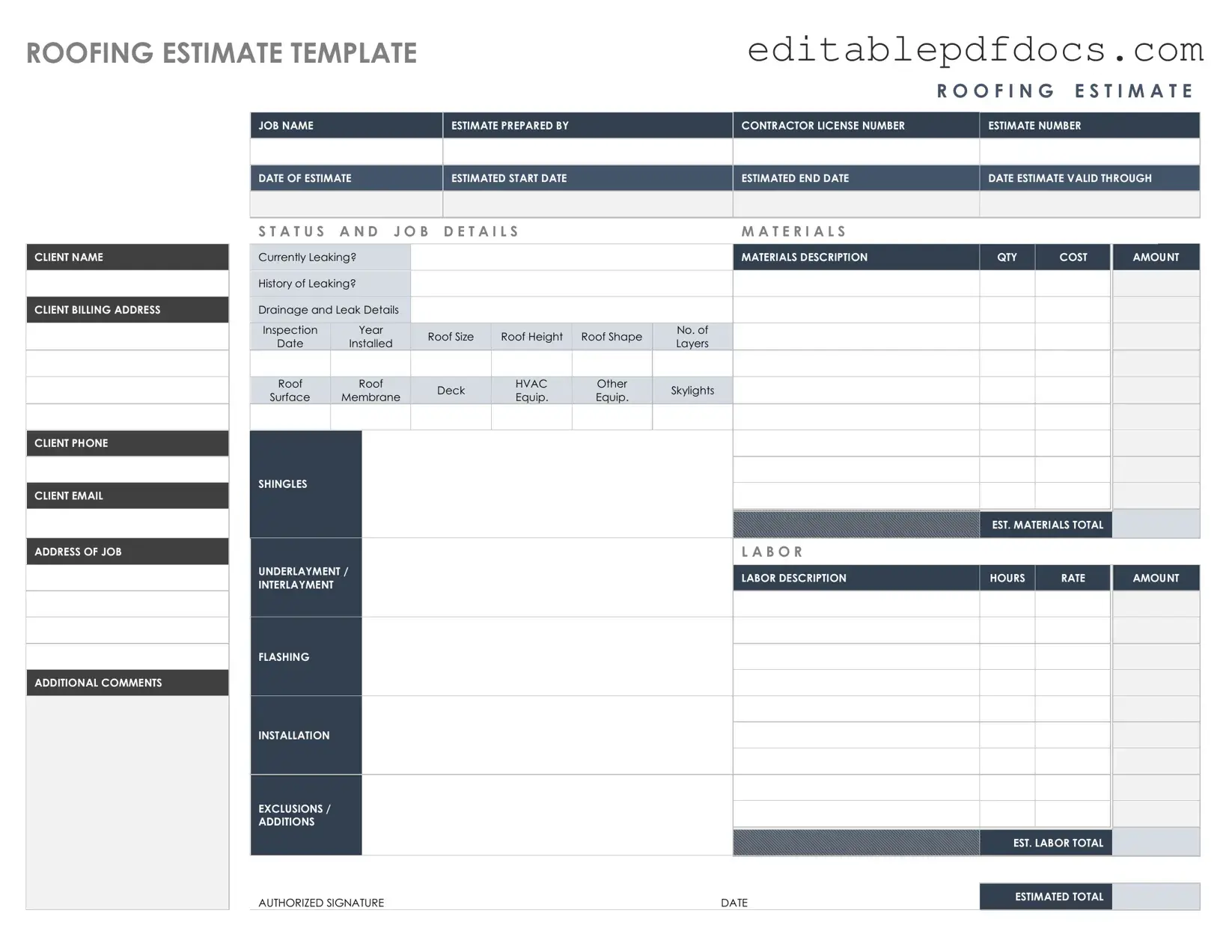When considering a roofing project, whether it's a minor repair or a complete replacement, a Roofing Estimate form plays a crucial role in the planning and budgeting process. This form typically outlines the scope of work to be performed, including details about materials, labor costs, and timelines. Homeowners can expect to see sections that address specific roofing types, such as shingles, metal, or tile, along with measurements and any necessary permits. Additionally, the form may include information about warranties and insurance coverage, ensuring that both the homeowner and the contractor have a clear understanding of expectations. By providing a comprehensive overview, the Roofing Estimate form helps facilitate communication between the homeowner and the contractor, ultimately leading to a smoother project execution. Understanding this form can empower homeowners to make informed decisions and prepare for the investment in their roofing needs.
